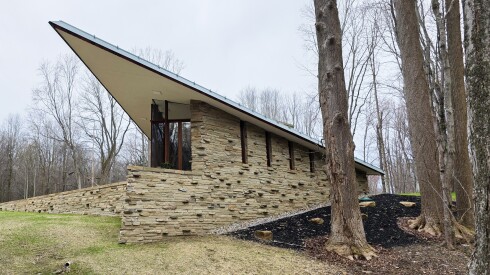Rembrandt purchased this sizable former merchant’s house in 1639, when he was at the peak of his fame as a portraitist of the city’s elite. He lived, painted, and taught in the multistory building for nearly 20 years, and on the topmost floor—the site of his studio and workshop—crafted what is considered his masterpiece, the Night Watch. The home’s interior is not original but rather a faithful re-creation, based upon a room-by-room inventory conducted after the artist declared bankruptcy in 1656 and was eventually forced to leave. Be sure to catch the free daily paint-preparation and etching demonstrations; the former is particularly interesting to understand how difficult—and expensive—it was to acquire and process paint in that era. Though there are no Rembrandt paintings at this museum, you will find a large number of his superb etchings on view in the ground-floor exhibition space.
More Recommendations
Rembrandt House Museum
Rembrandt purchased this sizable former merchant’s house in 1639, when he was at the peak of his fame as a portraitist of the city’s elite. He lived, painted, and taught in the multistory building for nearly 20 years, and on the topmost floor—the site of his studio and workshop—crafted what is considered his masterpiece, the Night Watch. The home’s interior is not original but rather a faithful re-creation, based upon a room-by-room inventory conducted after the artist declared bankruptcy in 1656 and was eventually forced to leave. Be sure to catch the free daily paint-preparation and etching demonstrations; the former is particularly interesting to understand how difficult—and expensive—it was to acquire and process paint in that era. Though there are no Rembrandt paintings at this museum, you will find a large number of his superb etchings on view in the ground-floor exhibition space.
Rembrandt House Museum
Rembrandt purchased this sizable former merchant’s house in 1639, when he was at the peak of his fame as a portraitist of the city’s elite. He lived, painted, and taught in the multistory building for nearly 20 years, and on the topmost floor—the site of his studio and workshop—crafted what is considered his masterpiece, the Night Watch. The home’s interior is not original but rather a faithful re-creation, based upon a room-by-room inventory conducted after the artist declared bankruptcy in 1656 and was eventually forced to leave. Be sure to catch the free daily paint-preparation and etching demonstrations; the former is particularly interesting to understand how difficult—and expensive—it was to acquire and process paint in that era. Though there are no Rembrandt paintings at this museum, you will find a large number of his superb etchings on view in the ground-floor exhibition space.























